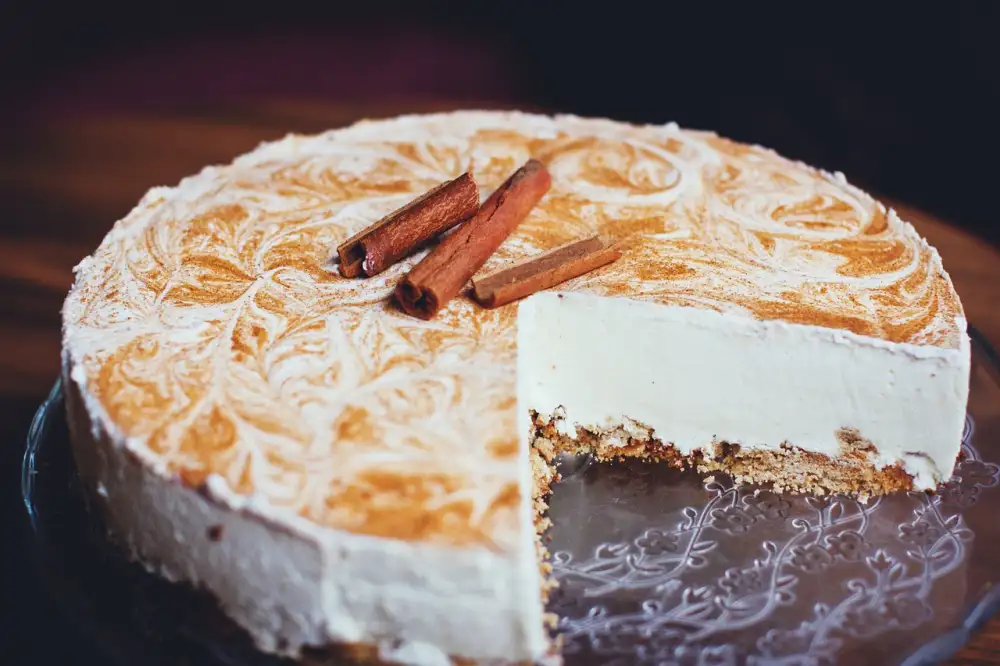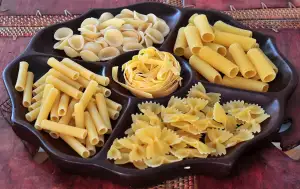Indulge in the Irresistible Basque Cheesecake: A Delectable Recipe from the Basque Region

- Ingredients for Basque Cheesecake: Exploring the Key Components
- Step-by-Step Instructions: How to Make Basque Cheesecake at Home
- Tips and Tricks for Perfect Basque Cheesecake: Achieving the Creamy Texture
- Serving and Pairing Suggestions: Enhancing the Flavors of Basque Cheesecake
- Variations and Innovations: Putting a Twist on the Traditional Recipe
Basque Cheesecake is a heavenly dessert that hails from the Basque region of Spain. With its rustic appearance and creamy texture, this cheesecake has gained popularity worldwide for its unique and indulgent taste. Unlike traditional cheesecakes, the Basque version is intentionally burnt on top, giving it a caramelized flavor that perfectly balances the rich creaminess within. This delightful delicacy is a must-try for any dessert lover seeking a truly unforgettable treat.
Ingredients for Basque Cheesecake: Exploring the Key Components
When it comes to creating the perfect Basque Cheesecake, it all starts with the right ingredients. This delectable dessert requires a few key components that come together to create its unique and irresistible flavor. The main ingredients for Basque Cheesecake include cream cheese, sugar, eggs, heavy cream, flour, and vanilla extract. These simple yet essential ingredients work in harmony to achieve the rich and creamy texture that is characteristic of this delightful delicacy. Additionally, some recipes may call for a touch of lemon zest or salt to enhance the overall taste profile. By using high-quality ingredients and following the recipe closely, you can ensure that your Basque Cheesecake turns out absolutely divine.
Step-by-Step Instructions: How to Make Basque Cheesecake at Home
1. Preheat your oven to 400°F (200°C) and line a round cake pan with parchment paper.
2. In a large mixing bowl, combine 2 pounds (900g) of cream cheese and 1 cup (200g) of granulated sugar. Mix until smooth and creamy.
3. Add 4 large eggs, one at a time, mixing well after each addition. Make sure the eggs are fully incorporated before adding the next one.
4. Gradually add 1 cup (240ml) of heavy cream and mix until well combined.
5. Sift in ½ cup (60g) of all-purpose flour and gently fold it into the mixture until just incorporated. Be careful not to overmix.
6. Pour the batter into the prepared cake pan and smooth out the top with a spatula.
7. Place the cake pan on a baking sheet and bake for about 50-60 minutes, or until the top is golden brown and slightly cracked.
8. Remove from the oven and let it cool completely in the pan before transferring to a wire rack.
9. Once cooled, refrigerate for at least 4 hours or overnight to set.
10. To serve, carefully remove the cheesecake from the pan by lifting it using the parchment paper edges.
11. Slice into wedges and enjoy!
Note: The center of the cheesecake will be soft and slightly jiggly when it comes out of the oven but will firm up as it cools.
Enjoy making this decadent Basque Cheesecake at home!
Tips and Tricks for Perfect Basque Cheesecake: Achieving the Creamy Texture
To achieve the perfect creamy texture in your Basque cheesecake, there are a few tips and tricks to keep in mind. Firstly, make sure to use full-fat cream cheese as it provides the richness and smoothness that is characteristic of this dessert. Secondly, be sure to mix the cream cheese well until it is completely smooth before adding any other ingredients. This will help prevent any lumps from forming in the batter. Additionally, when adding the eggs, do so one at a time and mix just until incorporated. Overmixing can lead to a denser texture. Lastly, baking at a high temperature initially and then reducing it helps create the signature burnt exterior while maintaining a creamy interior. Follow these tips for a perfectly creamy Basque cheesecake that will melt in your mouth with every bite.
Serving and Pairing Suggestions: Enhancing the Flavors of Basque Cheesecake
To truly elevate the flavors of Basque Cheesecake, consider serving it with a dollop of freshly whipped cream. The light and airy texture of the cream complements the rich and creamy cheesecake perfectly. For an added touch of indulgence, drizzle some warm caramel sauce over the top.
If you're feeling adventurous, try pairing your Basque Cheesecake with a scoop of tangy lemon sorbet. The refreshing citrus notes will provide a delightful contrast to the sweet and velvety cheesecake.
For those who prefer a more traditional approach, serve your Basque Cheesecake with a side of fresh berries. The natural sweetness and vibrant colors of strawberries, raspberries, or blueberries will add a burst of freshness to each bite.
To enhance the overall experience, consider serving your Basque Cheesecake alongside a cup of aromatic coffee or a glass of dessert wine. The complex flavors in these beverages will complement the richness of the cheesecake and create a harmonious balance on your palate.
Remember, presentation is key when serving this delectable dessert. Garnish your Basque Cheesecake with mint leaves or edible flowers for an elegant touch. And don't forget to dust it lightly with powdered sugar for that final artistic flourish.
With these serving and pairing suggestions, you can take your enjoyment of Basque Cheesecake to new heights. So go ahead, indulge in this delightful delicacy and savor every heavenly bite!
Variations and Innovations: Putting a Twist on the Traditional Recipe
While the traditional Basque Cheesecake is undeniably delicious, there are also exciting variations and innovations that can be explored to add a unique twist to this classic dessert.
One popular variation is the addition of different flavors. By incorporating ingredients such as chocolate, matcha, or fruit purees into the cheesecake batter, you can create new and exciting flavor profiles. These additions not only enhance the taste but also add a vibrant visual appeal to the dessert.
Another innovative twist is experimenting with the crust. While the traditional Basque Cheesecake doesn't have a crust, you can choose to add one for an extra layer of texture and flavor. Graham cracker or cookie crusts work well with the creamy cheesecake filling, providing a delightful contrast.
For those looking for a healthier alternative, there are options too. You can substitute regular cream cheese with low-fat or Greek yogurt for a lighter version of Basque Cheesecake. This modification reduces the calorie content while still maintaining the lusciousness and creaminess that makes this dessert so irresistible.
Additionally, you can get creative with toppings. From fresh berries and whipped cream to caramel sauce and nuts, there are endless possibilities to elevate your Basque Cheesecake presentation. Experimenting with different combinations will not only enhance the flavors but also make your creation visually appealing.
In conclusion, while staying true to its roots, Basque Cheesecake offers room for innovation and experimentation. By adding unique flavors, exploring different crust options, opting for healthier alternatives, or playing around with toppings, you can put your own twist on this beloved dessert and create something truly extraordinary. So go ahead and let your culinary creativity shine through in every delectable slice of Basque Cheesecake!
In conclusion, the Basque Cheesecake is a truly delightful delicacy that will captivate your taste buds and leave you craving for more. Its unique burnt caramelized crust and creamy, velvety interior make it a dessert like no other. With just a few simple ingredients and easy-to-follow steps, you can recreate this decadent treat in the comfort of your own home.
Whether you enjoy it plain or with a dollop of whipped cream, this cheesecake is sure to impress your family and friends. Its rich flavors and indulgent texture make it perfect for any occasion, from casual gatherings to special celebrations.
So why wait? Treat yourself to the irresistible charm of Basque Cheesecake and experience the blissful pleasure it brings. Indulge in every bite and savor the magic of this delectable dessert from the Basque region.
Published: 22. 01. 2024
Category: Recipes



